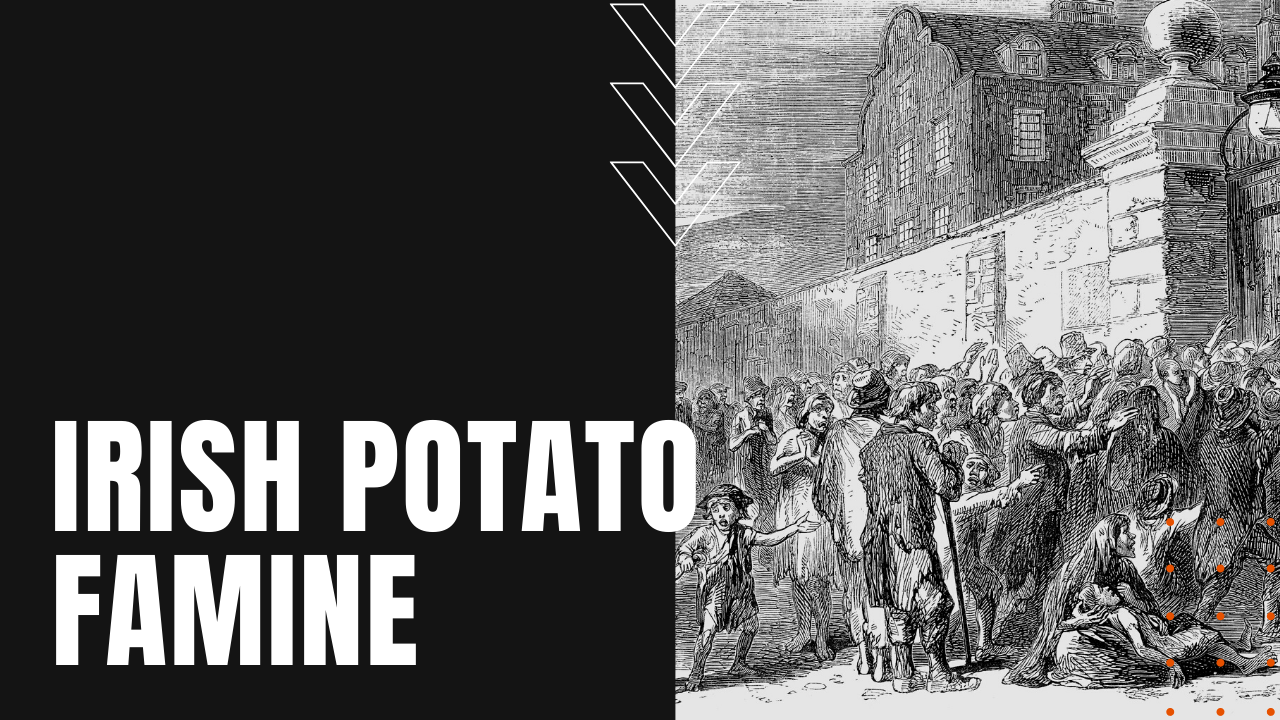Irish Potato Famine: Crop Failure Decimates Ireland’s Population

Known as the Great Hunger or an Gorta Mór in the Gaelic, more than 100 years before the onset of famine, landed gentry introduced a variety of potato nicknamed the “Irish Lumper” into the island nation, which soon became a staple for the poor, particularly during the barren months of winter.
What Caused The Irish Potato Famine?
When potato crops began to fail in 1845—caused by the infectious transmission of a fungal-like microorganism known as Phytophthora infestans, Irish leaders in Dublin petitioned Queen Victoria and British Parliament to intervene, but when Britain failed to act in any meaningful way, thousands of Irish poor began to die from starvation, while hundreds of thousands more died from diseases caused by malnutrition.
Mass Migration From Ireland
Concentrated mainly in the west and south of Ireland, with little aid from her British overlords, from 1845 to 1852, more than a million Irish died from an Drochshaol or the worst hard times, causing the mass exodus of over two million people to fled Ireland aboard packet ships, steamboats and barks, establishing the Irish Potato Famine as the greatest mass migration from any single island in recorded human history.
The migration of disaffected Irish also influenced the level of widespread unrest experienced during the European Revolutions of 1848, and has since been blamed by historians on absentee landlords, British inaction and a dependence by the Irish people on a single crop.
Black 47
During the famine’s peak year in 1847—known as “Black ’47,” roughly one million people died, while an additional one million fled the country, kicking off a century-long population drain in Ireland of nearly 25% of her pre-famine population.
After the end of the Great Hunger, relations between the Irish and their British rulers remained strained, igniting ethnic and sectarian tensions for decades to come, while boosting a sense of nationalism in Ireland as well as Irish emigrant populations abroad.
According to English documentary filmmaker John Percival, the famine, in his words, “became part of the long story of betrayal and exploitation which led to the growing movement in Ireland for independence.”
To further worsen the reputation of an uncaring British authority, records indicate that while more than a million Irish perished from starvation, large food exports of peas, beans, rabbits, fish and honey bound primarily to Great Britain increased during the worst years of the famine, making the Irish Potato Famine a tragic heartbreak for the Irish people, as well as a permanent stain on the history of British overrule.
